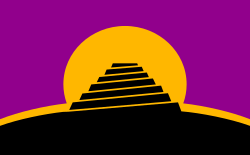Introduction

A constructed language is a language for communication between humans (i.e. not with or between computers) but unlike a language that emerges from human interaction, is intentionally devised for a particular purpose. Constructed language is often shortened to conlang and is a relatively broad term that encompasses subcategories including: fictional, artificial, engineered, planned and invented. A constructed language may include natural language aspects including phonology, grammar, orthography, and vocabulary. Interlinguistics includes the study of constructed languages. (Full article...)
Selected language

Neo is an artificially constructed international auxiliary language created by Arturo Alfandari, a Belgian diplomat of Italian descent. The language combines features of Esperanto, Ido, Novial and Volapük. The root base of the language and grammar (in contrast to that of Esperanto and Ido) are closely related to that of the French language, with some English influences.
The first Neo draft was published in 1937 by Arturo Alfandari but attracted wider attention in 1961 when Alfandari published his books Cours Pratique de Neo and The Rapid Method of Neo. The works included both brief and complete grammar, learning course of 44 lectures, translations of literary works (poetry and prose), original Neo literature, scientific and technical texts, idioms, detailed bidirectional French and English dictionaries. The total volume of the publications was 1304 pages, with dictionaries numbering some 75 000 words. Such a degree of details was unprecedented among constructed languages of the time.
The language stands in the tradition of international auxiliary languages such as Esperanto or Ido, with the same goal: a simple, neutral and easy to learn second language for everybody. Neo attracted the interest of the circle around the International Language Review, a periodical for IAL proponents whose publishers co-founded the international Friends of Neo (Amikos de Neo) with Alfandari; the organization also published its bulletin, the Neo-bulten. For a few years it looked like Neo could give some serious competition to Esperanto and Interlingua. Find out more...
Did you know...
...that the Marquis Louis de Beaufront, one of the creators of Ido, was not really a marquis?
...that two different constructed languages have claimed the name Interlingua, and one the name Interlingue?
...that Gottfried Leibniz was not only a famous scientist, but also the creator of a language named Characteristica universalis?
Current events
(none)
Projects

|
You are invited to participate in WikiProject Constructed languages, a WikiProject dedicated to developing and improving articles about constructed languages. |
Things you can do
-
Join: Constructed Languages WikiProject & add {{Wikipedia:WikiProject Constructed languages/Userbox}}
Follow: Recent changes in related articles
Tag: {{WP conlangs}}, {{Constructed languages}}, and {{Infobox language}} (see WP:CL Templates)
Evaluate: Everything in Category:Unassessed constructed language articles
Report: Edit wars and deletions
Expand: everything in category:Constructed language stubs
Requests:
-
Abakwi, Ancient Language, Arovën, Baza, Bluddian, Dremlang, Eaiea, Eloi, Ekspreso, Esperando, Fasile, Glide, Herman Miller, Language Creation Society, Latejami, Mezhdunarodny Nauchny Yazyk, Mirad, Modern Indo-European, Mondlango, Musbrek, Noxilo, Or'zet, Romanica (rd), Romanova (rd), Signuno, Sperethiel, Szkev, Tceqli/Ceqli, Thosk, Tokcir, Troscann, Unas, UNI, Universalspråket, Vorlin.
Web resources

Some Internet resources relating to constructed languages, by Richard Kennaway
UniLang.org
Conlang wiki
Articles
Wikipedia in constructed languages
Associated Wikimedia
The following Wikimedia Foundation sister projects provide more on this subject:
-
Commons
Free media repository -
Wikibooks
Free textbooks and manuals -
Wikidata
Free knowledge base -
Wikinews
Free-content news -
Wikiquote
Collection of quotations -
Wikisource
Free-content library -
Wikiversity
Free learning tools -
Wiktionary
Dictionary and thesaurus













